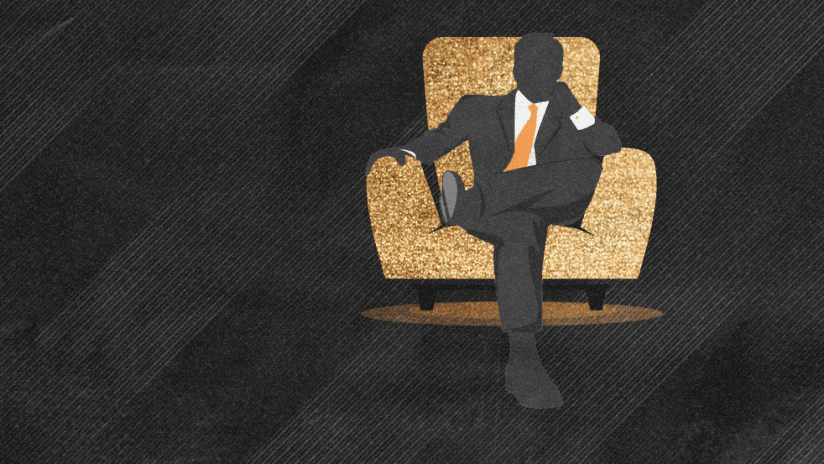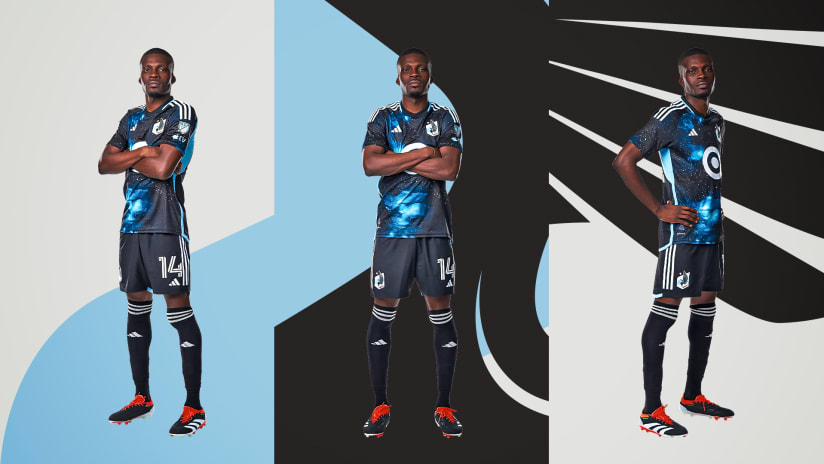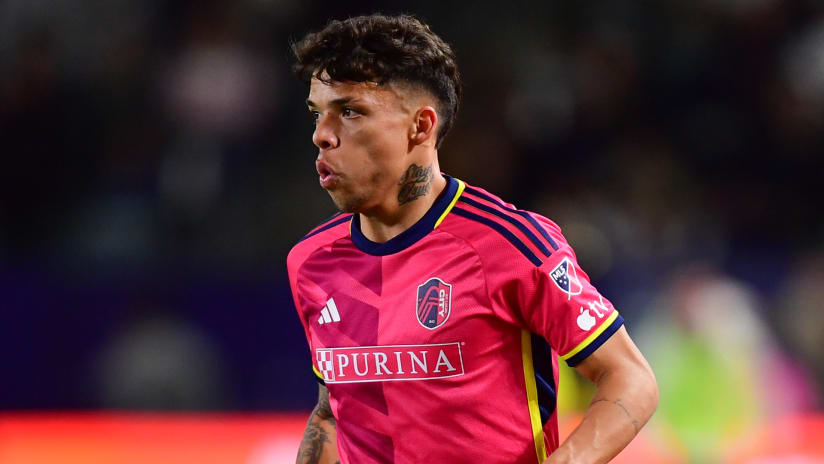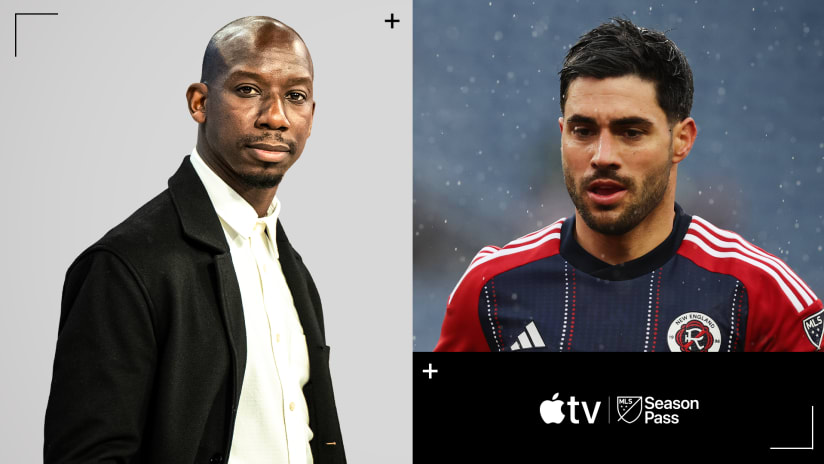It has been nine-and-a-half long months since the US men's national team last took the field, so now feels like a very good time for a reset of what Gregg Berhalter's trying to accomplish, how he's trying to accomplish it and who he's trying to accomplish it with. This is especially true since this newest 24-man camp roster, announced last week and taking the field for the first time on Thursday against Wales, is stuffed with largely new and almost entirely very young faces.
That doesn't mean this isn't a reboot after an up-and-down 2019 from Berhalter and the USMNT. But it a distinctly new phase.
What Happened Last Time
Way back in early February a largely experimental and primarily MLS-based US side — this was the January camp game, remember — pretty thoroughly bossed what I'd consider the Costa Rican A- team. It ended 1-0 on a Uly Llanez goal after Reggie Cannon had drawn a penalty thanks to a smart overlap, but the score really did flatter the Ticos, who never really threatened.
The game was a departure from what the US had done throughout most of 2019 not because of the personnel or the scoreline, but because of how they'd done it. There was much more pressing out of a 4-3-3 and the mid-block 4-4-2 (or 4-2-2-2) that had proved itself tissue-soft against Mexico in September and Canada in October was mothballed.
How do the US Want to Play?
This is where formational shorthand kind of fails. If you ask me what formation Berhalter wants his team to play in, I'll probably just say "4-2-3-1" or "4-3-3" because one of those two will be how it's written on the team sheet. But the reality is that there will be multiple different looks depending upon the phase of the game.
This is not new or unusual in the world of soccer! There are very few teams that defend in a 4-3-3, possess in a 4-3-3 and attack in a 4-3-3. Our game is beautiful and fluid and dynamic, and that means you'll see a lot of different shapes.
Defending on the Back Foot
I am choosing to read a lot into that Costa Rica game — a single, non-international date friendly. There is danger in reading too much.
So I am also going to read into the game before that, a dominant 4-1 win over Canada in the Nations League. In that particular game the US defended out of a 4-2-3-1 shape when playing in a mid or low block. We never saw that against Costa Rica because, frankly, the Ticos never had enough of the ball to threaten. I suspect that if they'd managed to put their foot on it and knock it around, the US would've sort of naturally fallen into the 4-2-3-1 and absorbed before trying, eventually, to trap possession against the sideline (a hallmark of Berhalter's Crew teams).
This is what that shape would look like:
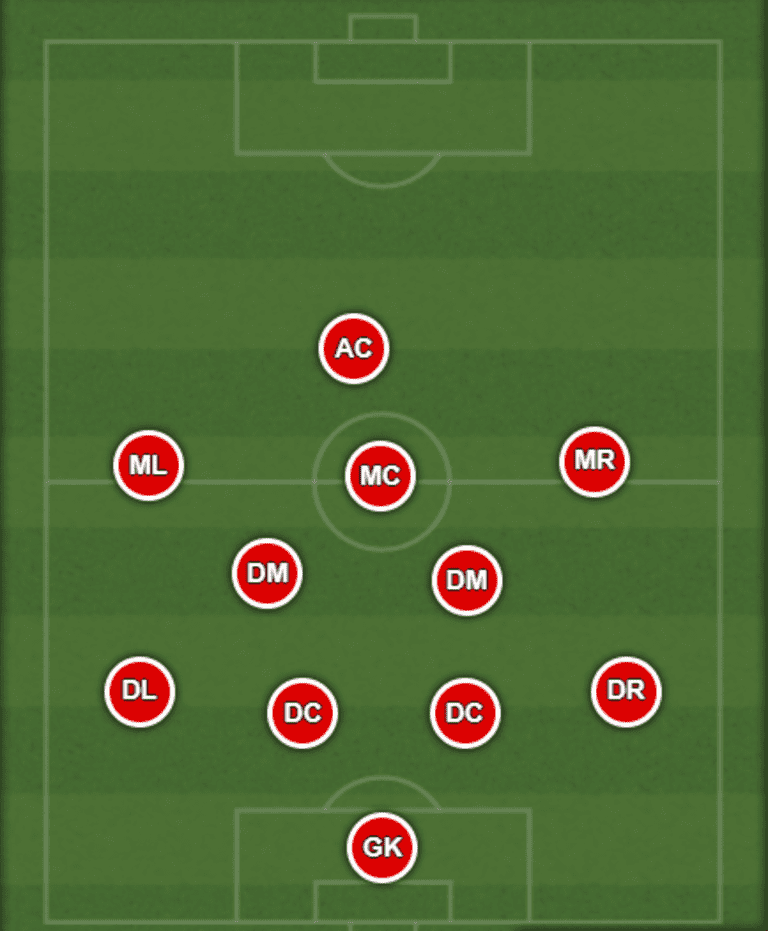
Against Canada it was Weston McKennie dropping deep next to Jackson Yueill in front of the back line, while Sebastian Lletget pushed up as the No. 10 underneath the center forward. Presumably over the next two games, we'll get at least 90 minutes (I'm hoping for 120) of McKennie and Adams in those deeper roles, and then some of Lletget or newcomer Yunus Musah in the No. 10 role.
But bear in mind: This is only the No. 10 role defensively, and when the US have been pinned. Do not think of this position as "the creative fulcrum of the team." Berhalter's system does not work like that.
Lletget and Musah are both probably better as 8s, and both have spent a ton of time playing on the flank as well as in the interior.
Defending on the Front Foot
As I mentioned above: The US pressed out of a 4-3-3 against Costa Rica back in February. They'd also done some of that against Canada and then Cuba in November of last year, but it was less pronounced and, I would argue, less effective.
My guy Joe Lowrey had a great breakdown of February's game, which I recommend you read. I'm using this clip of his to illustrate the point he made:
I am also going to clip Joe's description of what happened because, frankly, I'm not going to say it any better than this:
When Costa Rica was building possession from their half via a center back, the U.S.’s striker, Ferreira, took away the opposing central defensive midfielder by man-marking him or stepping in front and cutting off any potential pass to that player. One of the wingers, Llanez or Paul Arriola, marked the other center back and the other winger marked the ball-side fullback to deny any easy ball-rotation.The two advanced central midfielders, Sebastian Lletget and Aaronson, were responsible for marking Costa Rica’s central midfielders, and central defensive midfielder Jackson Yueill was tasked with both recovering the ball in front of the back four and stepping higher into midfield to cover for his midfield partners.
That is not the whole of it, but that is the gist of it. The 4-2-3-1 back-foot shape we saw against Canada morphed into a 4-3-3 front-foot shape against the Ticos, with very specific defensive assignments designed to force Costa Rica to attempt to play the ball wide and up the flank, or over the top. They usually chose "over the top", which is pretty much exactly what you'd want if your center back pairing is Aaron Long and Walker Zimmerman, as it was on the day. That would also be good if your center back pairing is John Brooks and one of Matt Miazga or Chris Richards. Hint hint.
Here's what it looks like. Let's pretend the opposing left center back has the ball, so that's how the US defense would be oriented:
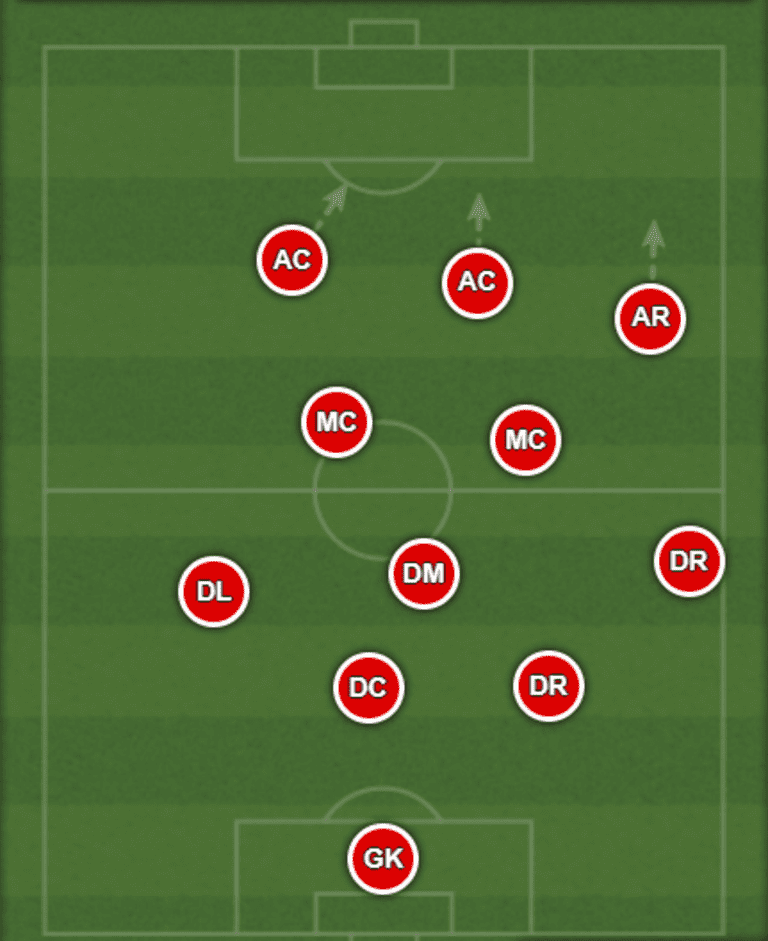
Orient toward the ball, prevent combo play through the middle (which devastated the US in that old 4-2-2-2, remember), and encourage either the big switch — which gives the entire defense time to shift — or a long-ball over the top.
No wheels have been reinvented here. This is just good soccer.
In Possession and Attack
There are two ways to think about what Berhalter's done as a head coach: He has changed everything because he's using different players in different formations and thus 2019 was kind of a wasted year...
-- OR --
He's changed nothing, really, because the whole point of everything he did all along, both tactically and formationally, was to get the US into a 3-2-2-3 with their foot on the ball.
Ok that's a false binary, but I've come to enjoy thinking about Berhalter's evolution through the lens of that second option, because in the end he's really just trying to do now what he was trying to do 18 months ago: get the US into that shape with the ball. And there was a lot of sturm und drang about his use of Adams in particular — though I will note, again, that in the one game Adams played in that now-seemingly-scrapped inverted fullback role, he got the most touches on the team and the US allowed precisely zero through the middle.
But that is mostly gone now. Instead, this is what happened to the US shape vs. Costa Rica, and what I expect will happen with the US shape against Wales and Panama:
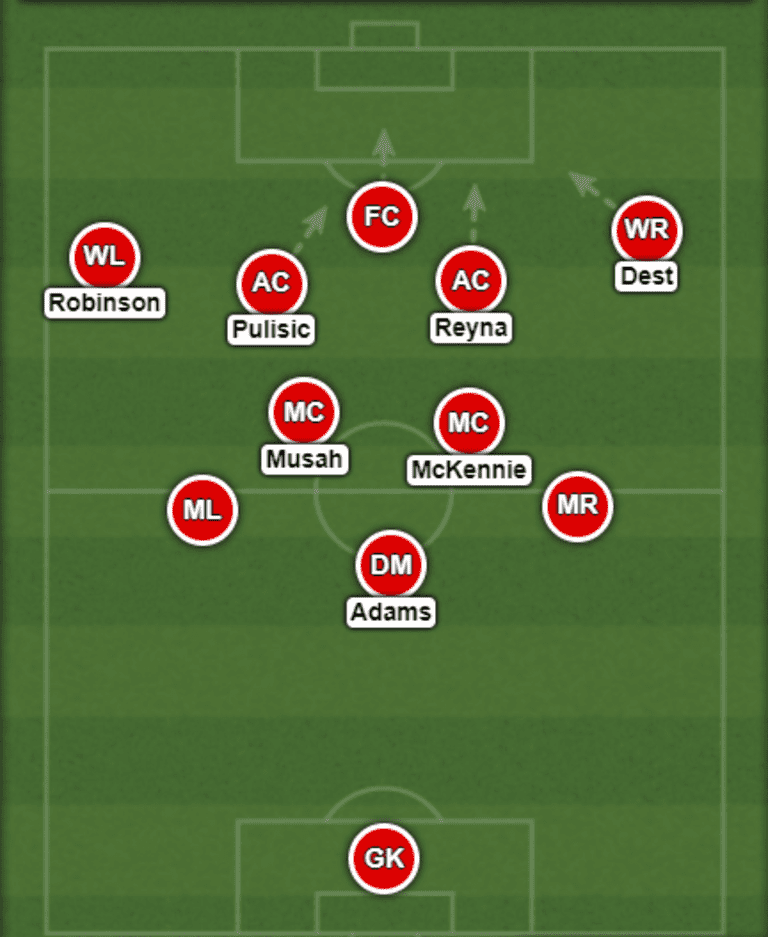
The fullbacks overlap, which means the wingers pinch inside to work in the half-spaces as, essentially, co-No. 10s. In February it was Llanez and Paul Arriola; in November it'll be
Christian Pulisic
(ok not really — I don't think he should play given his injury issues) Llanez or Tim Weah or Richy Ledezma and Reyna.
This pinched-in playmaker/combine around the box spot is where Reyna spends most of his time for Borussia Dortmund, mind you. So when you look at the lineup on Thursday and he's listed as a right winger, DON'T FREAK OUT. It does not mean he'll be out there getting chalk on his boots. That's not how "wingers" function in this system. They shouldn't even be called "wingers" to be honest, and they're not precisely playmakers, but I don't know if even the Germans have made up a word for it yet.
And yes, the first move in this sequence is Adams dropping back from his d-mid position as the two center backs flare out and the fullbacks push up. It will be like watching the 2017 Crew except with a half-dozen Champions League players.
This is going to be dope as hell.
One last note: Back in February Jesus Ferreira was the center forward, but played as a false 9. I don't think we'll see a false 9 this time.
How Wales Will Play
Meh, just listen to the Total Soccer Show on that one. I'm not going to pretend to have watched Wales in the past two years. I just assume they'll be very British.
Who Are the New Guys?
There's a bunch! Let's meet them:
FW: Niko Gioacchini: A 20-year-old true center forward who plays for Caen in Ligue 2. He's rugged and strong, does good work holding up the ball and runs a lot. He reminds me a lot of Vancouver's Lucas Cavallini. And like Cavallini at the same age, he needs to refine his goalscoring instincts.
But the raw materials are good and he's getting real minutes and scoring fairly consistently in a pretty good league at a young age.
FW: Sebastian Soto: Another 20-year-old center forward, Soto started for the US U-20s at last year's World Cup and made news recently by flirting with accepting a call-up from Chile. He basically lost a year of development by not playing because of his club situation, but is now scoring goals for fun in the Dutch second tier while on loan to Telstar from Norwich City.
He looks stronger than he did 18 months ago, but is still kind of a lightweight. He's also much more of a poacher than a target man.
W: Gio Reyna: You know who Gio Reyna is and what he does by now, right?
W: Konrad de la Fuente: Konrad was, like Soto, a part of that U-20 team last year. Unlike Soto he struggled badly, to the point where you could question what his immediate future was.
It turns out his immediate future was significant improvement with Barcelona, to the point that he's now made the gameday squad a couple of times (but has yet to debut) for the full first team. And he's still just 19.
He's very right-footed and has looked much more comfortable playing inverted than as a traditional winger, as he did for Tab Ramos and the US U-20s last year.
AM: Richy Ledezma: That U-20 team was stocked, is what I'm saying. Ledezma didn't get to show his whole range of skills since he was recovering from an injury and didn't play much, but when he got on the field -- especially against France — he was a dynamic, game-breaking No. 10. He just glides both on and off the ball, and has the ability to finish plays either by scoring or by finding the last pass.
He has not yet broken through for PSV into the regular first-team rotation (he just made his debut last week) because 1) he is too right-footed, which causes him major problems, and 2) his reactions in transition defense are poor.
I still have a lot of Richy Ledezma stock, though.
CM: Yunus Musah: The youngest member of the roster, as he was born 16 days after Reyna in 2002, Musuah's also a surprise inclusion. He's a tri-national who had mostly represented England in the youth national team ranks, and the US had to push to get him. They pushed hard, and they got him — at least for this camp. Nothing that happens over the next week can cap-tie him, remember.
Musah, who was born in NYC and came through the Arsenal academy system, is starting for Valencia in La Liga mostly as a right midfielder though sometimes as a right winger. Consensus seems to be that his future is more likely to be as a box-to-box No. 8, and Berhalter explicitly compared him to McKennie, so I don't think there's too much tea-reading necessary to figure out where he's going to play in this camp.
DM: Johnny Cardoso: Or just "Johnny," actually, for the New Jersey-born but Brazil-raised 19-year-old, who is already a regular with Internacional of Porto Alegre. That's one of Brazil's biggest clubs, and that means he's already played a bunch both in Brazil's top flight and in the Copa Libertadores.
Johnny lacks a bit of defensive bite but I think he should be right at home in the "drop between the defenders and orchestrate from deep" role.
DM: Owen Otasowie: A giant 19-year-old defensive midfielder (who might actually fancy himself as more of a No. 8) who was born in NYC and has spent the past couple of years with the Wolves academy and in their youth ranks. He's made one first-team appearance, back in last year's Europa League, but hasn't been seen or heard from with the first team since then.
Otasowie's also played some center back, both for some of the Wolves youth teams and the US U-18s. I hope that's his long-term position.
CB: Chris Richards: Ok, back to last year's U-20s. Richards was the rock in the center of that defense, and arguably the best prospect on that team (though obviously there are cases to be made for others, with Dest being the most obvious). He is big, strong and fast — probably an A- overall athlete — and a very good-to-great distributor of the ball (though opinions from people I respect vary on that).
When he made his debut for Bayern Munich's first team earlier this year he played as a right back. I'll go ahead and guess that fewer than 3 percent of his total minutes for the USMNT, no matter how many he eventually accrues, will come at that spot. He is a pure center back here.
GK: Chituru Odunze: I am not going to give you a scouting report on the third-string goalkeeper. Just know that he is huge, he is from Raleigh, he is a US-Canadian dual-national and he's with Leicester City playing in the youth ranks these days.
My Starting XI:
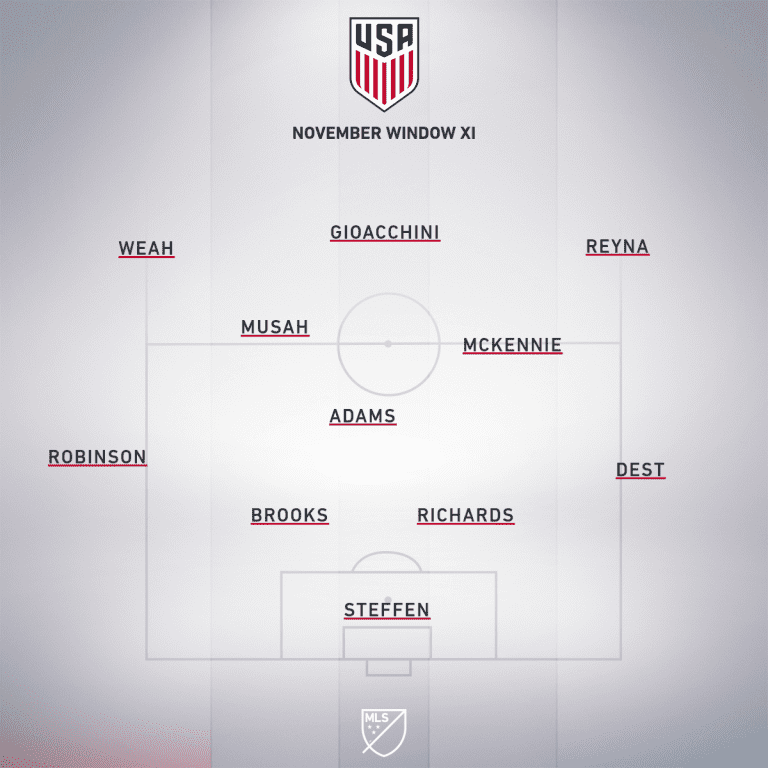
A few notes:
- Remember, this represents just one of the US shapes/formations.
- Weah hasn't been playing much for Lille, and when he has been out there it's often been as a forward. I still want to see him as an inverted winger here even if he can only go 60 minutes. I also refuse to worry about his playing time with Lille until February at the earliest. Give him time.
- Antonee Robinson is very north-south, while Sergino Dest very much isn't. Both guys are "attack first" fullbacks, and there is a danger that having them both out there will cause the US to become unbalanced. Figuring out if that is in fact true is what friendlies are for.
- I think Musah starts even though Lletget was a late call-up, but I won't lose my mind if Lletget starts and Musah comes off the bench for 20 or 30 minutes. At this point we've got to trust Berhalter's ability to recruit, right?
- There is no way John Brooks plays both games. I expect him for one and Tim Ream for the other.
- I don't actually care which of Richards or Matt Miazga get whichever minutes.
- My guess is that Ethan Horvath will get one of these games, as Steffen no longer has work permit issues to worry about.
It's been too long. Enjoy the show, everyone.


